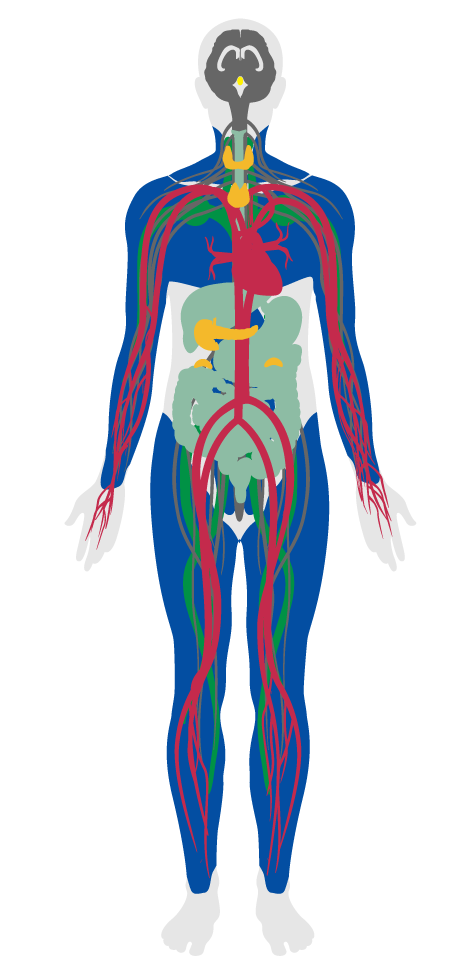Circadian lighting design
- 52 Mindful eating
- 53 Visual lighting design
- 54 Circadian lighting design
- 55 Electric light glare control
- 56 Solar glare control
- 57 Low-glare workstation design
- 58 Color quality
- 59 Surface design
- 60 Automated shading and dimming controls
- 61 Right to light
- 62 Daylight modeling
- 201 Food environment
- 202 Light at night
54. Circadian lighting design
Exposure to light regulates the circadian rhythm, which determines sleep and wake cycles. To promote alertness and activity, the human circadian cycle is most sensitive to lights of high frequency and intensity. Conversely, lights of low frequency and intensity signal the body to decrease energy and prepare for rest.
This feature provides lighting conditions that reinforce the natural patterns of the human circadian cycle. The Equivalent Melanopic Lux (EML) is a measurement of light's effects on the circadian cycle. EML can be used to determine how interior lighting conditions may be optimized to support the circadian function. See Tables L1 and L2 in Appendix C for more information on how to calculate the EML of individual lamps and larger spaces.
To accurately portray colors in the space and enhance occupant comfort, all electric lights (except decorative fixtures, emergency lights and other special-purpose lighting) meet the following conditions:
In all bedrooms, bathrooms, and rooms with windows, one or more fixtures provide the following:
Workplaces where employees spend most of their time in spaces with light levels limited by work type (such as restaurant servers or hospital ward workers) have break rooms which meet the following requirement:
At least one of the following requirements is met:

Applicability Matrix
| Core & Shell | Tenant Improvement | New Construction | |
|---|---|---|---|
| Part 1: Color Rendering Index | - | O | O |
| Part 2: Melanopic Light Intensity in Living Environments | - | - | - |
| Part 3: Melanopic Light Intensity in Breakrooms | - | - | - |
| Part 4: Melanopic Light Intensity in Learning Areas | - | - | - |
| Commercial Kitchen | Schools | Multifamily Residential | Restaurant | Retail | |
|---|---|---|---|---|---|
| Part 1: Color Rendering Index | O | O | O | O | O |
| Part 2: Melanopic Light Intensity in Living Environments | - | - | O | - | - |
| Part 3: Melanopic Light Intensity in Breakrooms | - | - | - | O | O |
| Part 4: Melanopic Light Intensity in Learning Areas | - | O | - | - | - |
Verification Methods Matrix
| Letters of Assurance | Annotated Documents | On-Site Checks | |
|---|---|---|---|
|
PART 1 (Design) Color Rendering Index |
Architect | ||
|
PART 2 (Performance) Melanopic Light Intensity in Living Environments |
Performance Test | ||
|
PART 3 (Performance) Melanopic Light Intensity in Breakrooms |
Performance Test | ||
|
PART 4 (Design) Melanopic Light Intensity in Learning Areas |
Architect |
| 54.4.b |
ANSI/IES RP-3-13 provides Table 3 for recommended maintained illuminance targets for the vertical plane stratified by observer age. Table 3b recommends a target value of 150 lux on the vertical plane in art studios for observers <25 years of age. |
| 54.1.b |
ANSI/IES American National Standard Practice for Office Lighting (RP-1-12) provides recommended maintained illuminance targets for various types of spaces by age group. For reception desks, RP-1-12 recommends a maintained target of 150 lux for ages 25-65. |
